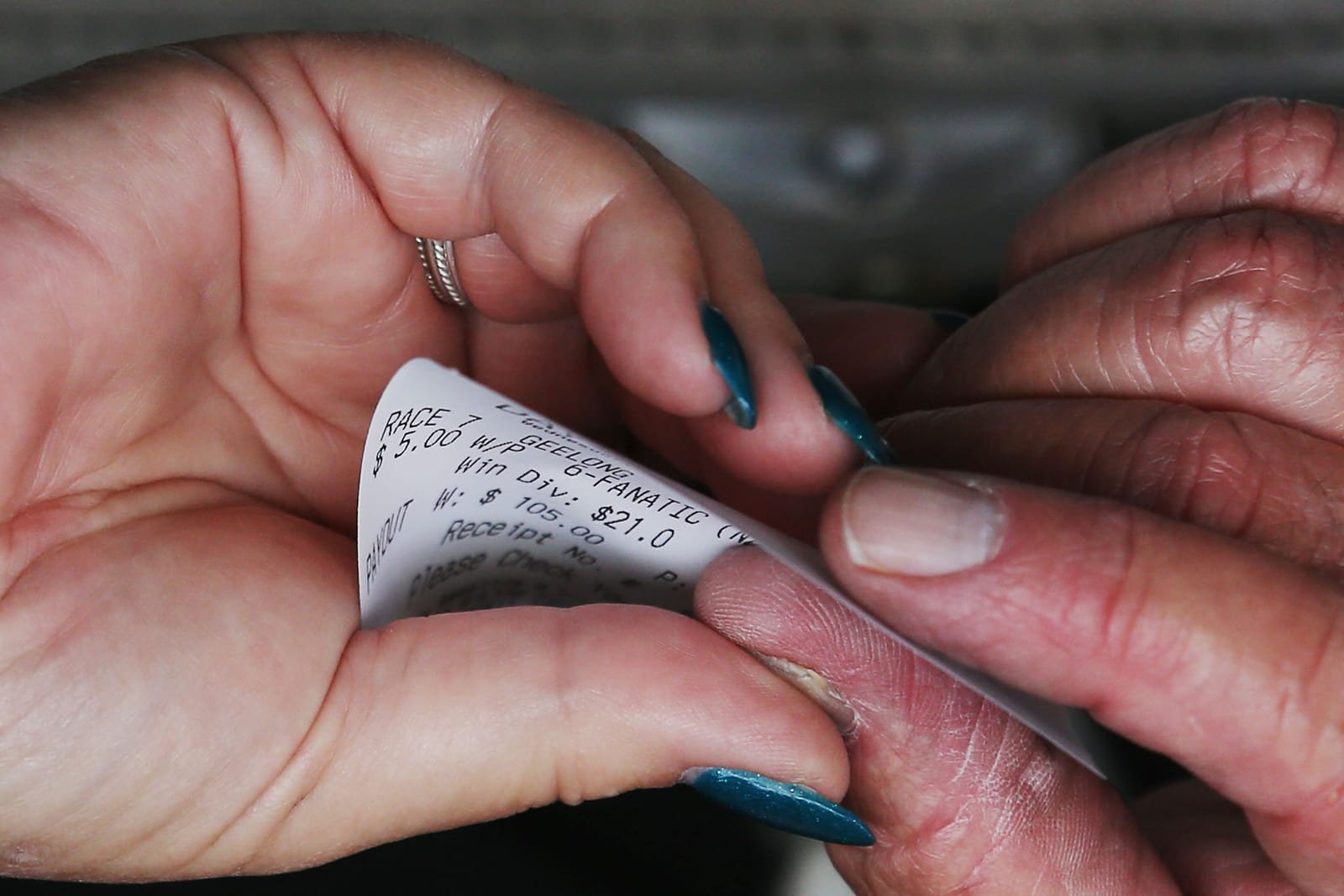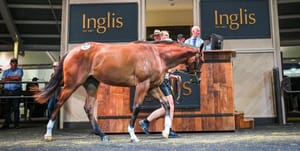I’m yet to meet Tom Reilly personally. I plan to, as soon as possible. In his leadership role at Thoroughbred Breeders Australia and Aushorse, he evinces dynamism and passion.
Tom’s fervour is alive for all to see in his 2016 essay “Racing Ahead”. I listened attentively to his interview on the “Fear and Greed Podcast” where he proudly, and rightly so, drew attention to Australian racehorse ownership dwarfing UK and US levels by ratios of more than 7:1 and 3:1 respectively.
John Messara is a towering figure in Australian thoroughbred breeding, Urbane yet thoughtful, he opines ardently on behalf of “The Pattern”, a system of elite races almost purposely constructed to inform and drive the breeding industry. He values “The Pattern” as “the bedrock of our sport”.
Will Freedman is the modern face of a legendary training dynasty. I encountered Will in his “Heart of Racing Podcast” and found him articulate and impressive. In perhaps a throwaway line, Will dreams of the Golden Slipper at Randwick, yearning for supremacy of “the best horse”.
The aforementioned gentlemen bring considerable talent and, importantly, an engaging “verve” to their contributions to thoroughbred racing. They present the inherent “nobility” of racing, a concept that often pertains to sporting excellence.
This begs the question, is horse racing a sport?
It is certainly an industry, and a giant one at that, dispersing annually in Australia $900 million in prize money via 19,000 races and providing employment for 80,000 people in the process.
Moreover, horse racing’s vertically integrated nature is far more economically valuable than other industries predicated on gambling. The presence and business of a country’s racecourses provide said country with jobs, economic impact and entertainment.
Racecourses provide the visible public/consumer marketplace for the horse breeders’ products: racehorses. The breeding industry owns land, has employees and purchases inputs, including hay, feed, veterinary and farrier services, tack and equipment, trailers and towing vehicles, apparel, and much more. All of these industries derive revenue from the horse breeders.
It should be emphasised that the regional nature of horse racing production offers further benefits to an increasingly urbanised country such as Australia. Tasked with maintaining infrastructure in and overall stewardship of vast areas outside our major cities, horse racing, breeding and agistment perform a critical role.
The optics of the contest provided by horse racing appear at a glance to pertain to sport; equine and human athletes wearing uniforms engaged in feats of skill, observed by interested spectators.
However, a closer examination suggests the sport facet is merely the tip of the iceberg of the behemoth industry outlined above.
It is said that racing was born of a desire to improve the 17th century cavalry stock in the face of progressively better firearms, seeking a faster, lighter and more maneuverable steed, especially as the days of heavy armour had passed. It is not hard to imagine that wagering attended accompanied these matches.
Indeed, at around the same time cricket and golf had a “rich” history of betting contests. Cricket manipulated team sizes to enhance interest while golf predated horse racing in the creation and adoption of the “handicap”.
Once the horse ceased to be a military asset, the overriding purpose of horse racing devolved to gambling, which for obvious reasons is best suited to an opaque contest (uncertainty as to winner). Hence the employment of the “handicap”.
The origin of “handicap” is simply fascinating. A judge/matchmaker/handicapper was appointed to evaluate the worth of (typically) two items. In our case, how much better or worse is Horse A than Horse B, expressed in extra pounds to be carried/conceded by the superior performer over the assigned distance.
Both owners would place an agreed stake in a cap, plus one of their hands, and in “rock- paper-scissors” style, withdraw their hand simultaneously, open indicating acceptance, closed indicating rejection of the “handicapper’s” assessment. If both owners accepted, or both rejected, the handicapper was rewarded with both stakes.
Otherwise, the owner who accepted swept the pool (paper beats rock). Thus the handicapper only earned by performing the task of satisfying or dissatisfying both owners.
In the modern era, the handicapper is often said to have “done their job” when connections complain about the weight allocation.
The handicapping of horse racing contestants could therefore generate enormous betting interest, despite repudiating the classic concept that the best contestant should win. It seems clear to me that the explosion of public interest in horse racing pre and post the turn of the 20th century was due to gambling. In 1890, the USA boasted 314 racetracks. Subsequent anti-gambling legislation decimated the industry such that by 1908 only 25 tracks remained.
Witness the extraordinary introduction of “tin-hare” greyhound racing in Sydney in early 1927. While betting on coursing events had been undoubtedly popular, mechanical hare racing enabled a significantly better betting experience, both in spectacle and contest, such that previously a coursing meeting might be attended by 2000 people, whereas “tin-hare” racing attracted a 30,000 strong crowd on Saturday nights.
Alas, again, the anti-gambling lobby was mobilised and legislation was passed to make betting after sundown illegal.
Why was the late 19th and early 20th century public’s imagination so inspired by horse racing and its working-class cousin dog racing? I’m sure heroic stories were present, but I submit it was mostly about betting on contests that were not simply exhibitions of excellence but rather more relatable situations to the participant spectator.
These contests were examples of life writ large. There is a biblical quotation (Ecclesiastes 9:11) “The fastest runner doesn’t always win the race, and the strongest warrior doesn’t always win the battle. The wise sometimes go hungry, and the skilful are not necessarily wealthy. And those who are educated don’t always lead successful lives. It is all decided by chance, by being in the right place at the right time.”
Let us return to Australian horse racing’s marvellous achievement of 105,000 racehorse owners. Australia’s adult population is roughly 21 million, meaning 0.5 per cent own racehorses.
I have examined many available gambling surveys and conservatively conclude that 1 in 3 Australian adults bet on horses at least once a year and that 1 in 3 of that subset bet on horses regularly.
In summary, 33 per cent of the adult population engage in horse race betting at least once a year and 11 per cent do so regularly, more than 20 times the number of racehorse owners, who themselves may be seen as a tiny subset of gamblers on horse racing.
I submit that horse racing is a betting medium and an entertainment industry with not just enormous potential but already replete with massive engagement. Australian horse racing has seven million annual customers.
There lies racing’s point of engagement.
Furthermore, the engagement is special, that of participant/spectator, a kind of active spectator that the burgeoning online gaming industry is desperately trying to create.
From an article titled “Spectator-Participation: the next step for gaming”, researchers from the University of Ontario described the potential entertainment value as: “The hectic nature of controlling a game through thousands of near-simultaneous inputs has the potential to create a joyful anarchy which drives a shared experience among community members as they strive for a common goal.”
That is a very “techie” description of betting on horses, pursuit of a “joyful anarchy” by participating in the evaluation of a contest rendered complex by not only the handicap but also the prevailing conditions and myriad other factors.
I’ve observed many keen form judges prosecute betting on racing with the simple ethos of “backing the best horse”. Sometimes the “best horse” will prevail, but often it won’t.
Horse racing as a betting medium offers angles for multiple players, indeed it thrives on the idiosyncratic.
The Golden Slipper at Rosehill is not meant to showcase the best two-year-old, rather the high prize money and prestige guarantees a high calibre field which in turn generates large betting turnover. Put simply, the race is for betting, and further, the result is to be critiqued for betting on those contestants in their subsequent assignments.
How then does Australian horse racing deal with its seven million customers?
The short answer is that it barely deals with them at all. You’ll recall earlier the power wielded by anti-gambling coalitions decimated American racing and banned night-time greyhound racing.
This simmering anti-gambling sentiment has typically caused Australian horse racing authorities to keep its customers at arm’s length, preferring instead to allow the pirates and profiteers of third-party wagering service providers (WSPs) near-exclusive access. The horse racing customer experience is almost the sole preserve of corporate bookmakers, many of whom are foreign-owned.
This need not be so. Whilst the WSPs are licensed by varying state government departments, the clever mechanism of “Race Fields” fees empowers principal racing authorities (PRAs) to control the WSPs' behaviour which ideally would extend to the excessive and excessively boorish advertising the general population is subjected to.
As I see it, WSPs could be forced into becoming public relations bodies for the PRAs. Why they are left unfettered to give horse race betting a bad name is beyond me?
Perhaps racing authorities continue to be sensitive to the so-called “social licence” of racing.
I perceive an attitude that wants racing to be presented as nobly as possible and beyond reproach. However betting should not be racing’s ‘dirty little secret’, it is the sole purpose of racing. Allow me to reiterate. Horse racing is a giant, valuable industry whose business is entertainment via the medium of betting.
Of course, one of racing’s major players is the exceptionally aesthetically pleasing thoroughbred of whom Les Carlyon wrote: “If racing were just an industry it would be on the finance pages. It would have the warmth of merchant banking and the literary traditions of insurance. All that can make racing beautiful, all that ever elevates it above dull commerce, is the horse. Take away the horse and you have no hero, no theatre. You are left with a zombie inserting a “gambling dollar” into a machine.”
However, the fact remains that, just as we once consumed horses for military purposes, we now consume them for entertainment purposes.
Our thoroughbreds, despite their majestic beauty, are livestock in the same way as other domesticated animals are purpose-bred to be consumed for milk, eggs or meat.
Our modern-day sensibilities expect the handling of all livestock to be performed ethically and humanely.
It would seem that Australian horse racing industry leaders are intent on selling horse racing to the 14 million Australian adults who are not, and may never be their customers; horses as lifelong pets, unbeatable and unbackable champions, racecourses as event destinations, trainer and jockey celebrities.
I say to our leaders, you have seven million customers whom you have ignored and allowed to be somewhat mistreated and mismessaged by third-party agencies.
Love us and we will love you back.
Marc Lambourne has been providing insightful assessments to most of the key players on the Sydney wagering landscape as well as trading upon them himself since 1987. He believes strongly in the dissemination of information and ideas.





